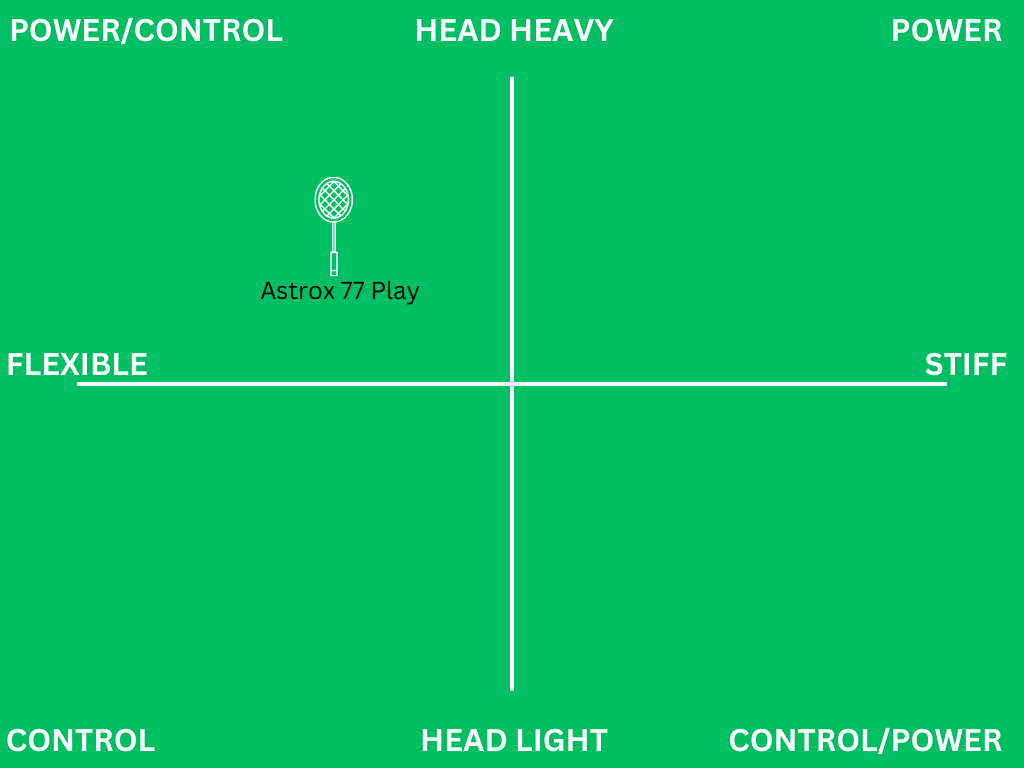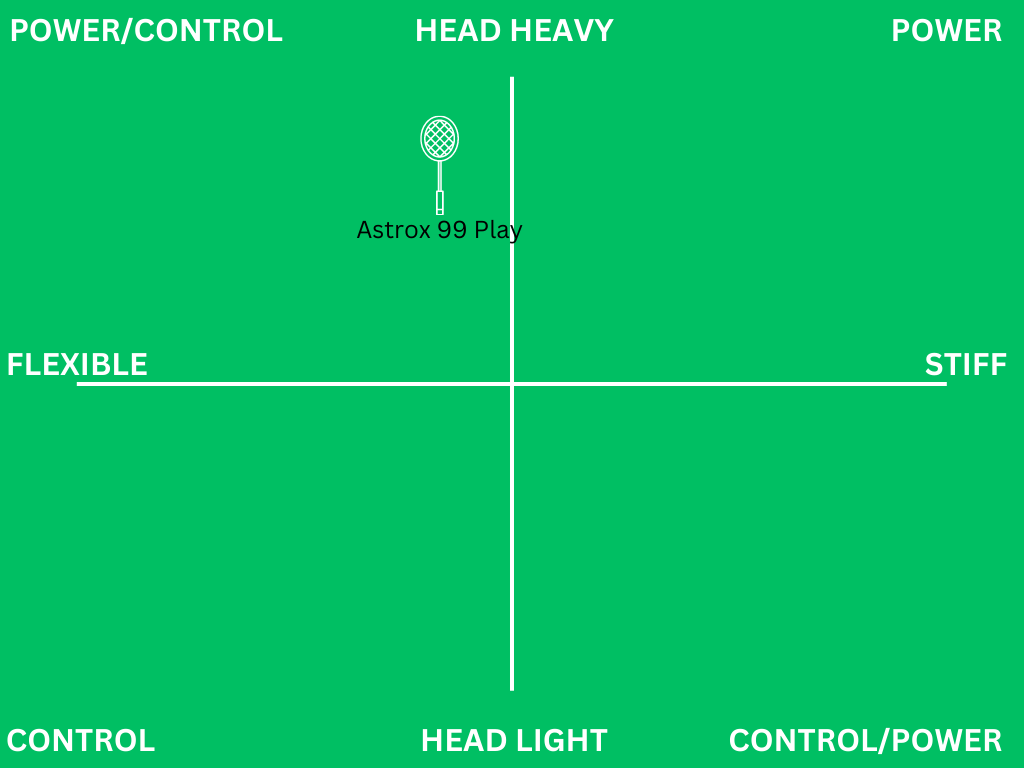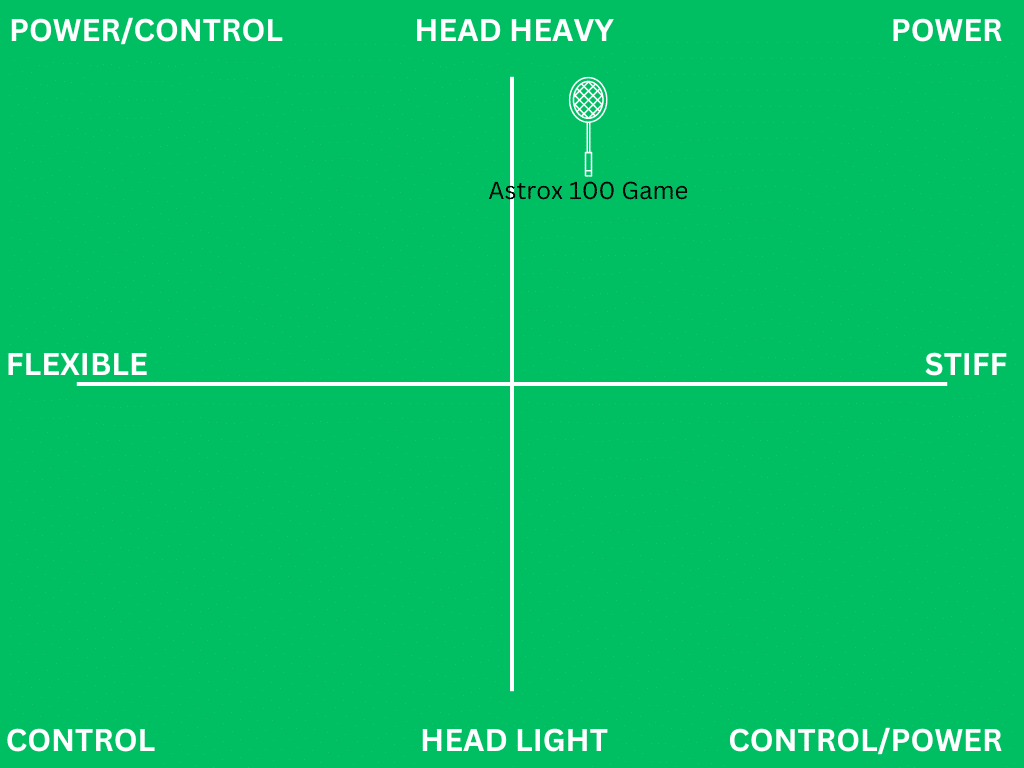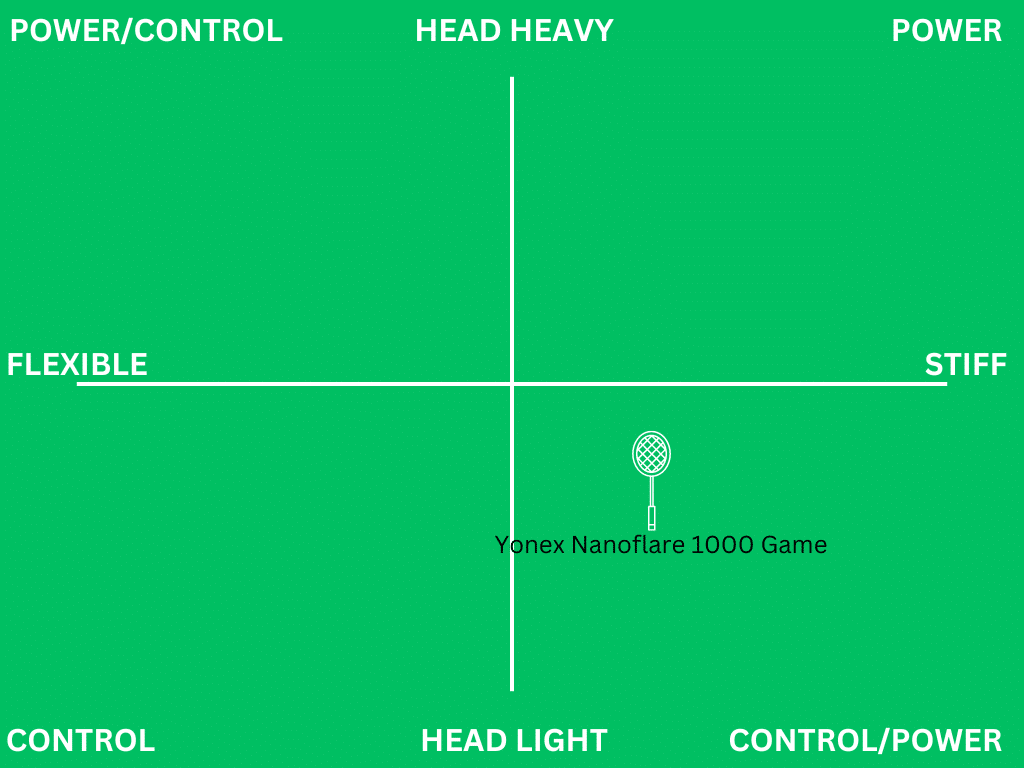They say that the first time you see a professional badminton tournament in person, you’ll be shocked at how powerful the smash sounds.
Heck, even if you’re a beginner, I bet you experienced the joy of hitting a hammer-slammer. One where even you are surprised by the speed as it catches your opponents off guard. When I do, I get an urge to find the best badminton rackets for smashing and smash over and over again.
The problem for many of us power lovers is that our technique isn’t amazing, so those hits become few and far between. Fortunately, we can get help by using the right racket.
Traditionally, it’s been easiest with rackets that carry more weight around the head (near the strings) than in the handle, as the swing can produce more power and momentum.
If we were to only look at raw power in a vacuum, the classic Yonex Voltric Z Force II, used by both Lee Chong Wei and Lin Dan, would probably take the cake.
On the other hand, that raw power typically means it’s hard to control nimble net play and fast defense. Players also tend to get shoulder fatigue as these rackets have a heavy swing due to the weight placement.
That means that the best rackets for smashing aren’t only based on raw power but also things like how easy it is for you to smash if you’re not in perfect position as it rarely happens that our opponents offer us the perfect setup for a smash over and over again.
In fact, in singles games against the right opponent, you might get away with only smashing but it’s usually trickier in doubles games as you’ll also cover the front court at times.
You might find that for singles smashing, you’ll prefer the heavier 3U weight class, whereas 4U tends to fit doubles better as the gameplay is faster.
The best badminton rackets for smashing by skill level
For each racket, I’ll be looking at a matrix blending the flexibility and power to give you a sense of how the rackets compare to each other.
I’ve made this simple explainer to give you a sense of where you fall if you’re interested in attacking and smashing-based rackets, along with where each player level will fall in terms of flexibility. It isn’t perfect but it’ll give you a rule of thumb to get started with.

With that out of the way, let’s look at some rackets!
Hey reader, a quick interruption... I’m experimenting partnering with webshops that sell badminton gear, like Amazon. I’ll include links to buy the gear I review and if you do, they’ll pay me a small commission. That doesn’t change your price and you’ll get more play-tested gear as a result but I thought it was fair to let you know. As an Amazon Associate, I earn from qualifying purchases. I appreciate your support, Aske
The best badminton rackets for smashing for beginners
1. The entry-level racket: Yonex Astrox 77 Play
2. The beginner power puncher: Yonex Astrox 99 Play
The best badminton rackets for smashing intermediate players
3. The mortal version of Lee Zii Jia’s weapon: Victor Thruster Ryuga 2
4. The intermediate edition of Thor’s hammer: Yonex Astrox 100 Game
5. The lightning strike: Yonex Nanoflare 1000 Game
Table of Contents
The two best badminton rackets for smashing beginners
First, let’s look at rackets for beginner players where all the fun is in getting the shuttle back over the net and landing some powerful shots.
1. The entry-level racket: Yonex Astrox 77 Play

Pros
- This racket is strong in most areas of the game without having any obvious weaknesses
- It has extra head weight to aid your power smash without it being too much so the racket feels slow or you’ll get tired
Cons
- Not highly specialized in one area like smashing
Yonex’s Astrox 77 Play is a smash-prone racket with the power-related attributes held back slightly so as not to be too one-sided and only focused on power smashing.
If you’re a beginner, you might not recognize that some rackets are more difficult to play with than others just yet. They can be too stiff, kinda like a baseball bat, meaning that you’ll need good timing and technique to get the most out of them. The Astrox 77 Play is the opposite with a flexible shaft to help beginners who haven’t perfected their technique yet.
There are also rackets that can feel as if the engineer’s only task was to pack it with raw power without any consideration for the rest of the game, like gently pushing the shuttle back over the net when returning a drop or net shot.
The Astrox 77 Play is well-rounded and easy to play with through all aspects of the game, yet still carries a slightly heavy head to help you generate power when you smash.
I wrote an in-depth review after play-testing this racket for hours, so you can get a better sense of whether it’s the right fit for you.
Key Specs
- Weight Class & Grip Size: 4U/G5
- Balance Point: Head heavy
- Flexibility: Flexible
2. The power puncher: Yonex Astrox 99 Play

Pros
- Primarily focused on power and is extra head heavy
- Has a larger-than-usual sweet spot to make it more forgiving if you don’t hit the shuttle perfectly
Cons
- The extra head weight can feel slow on gentle shots around the net
Yonex is categorizing the Astrox 99 Play as their beginner racket with the most head weight. That helps build moment and power when you hit the shuttle during a smash.
In fact, the Astrox 99 Play feels like a one-sided racket. If you’re playing singles games and you only care about getting help with power, even at the expense of other areas like net play, this is likely the racket for you.
It’s not like you can’t play net shots but you’ll have to be gentle with them as the racket feels slow and it’ll be easy to give it a whip with too much power. When testing it, I found it far too easy to send the shuttle back over the net with too much height and offer an easy kill to quick opponents. Find my experience testing the Astrox 99 Play here.
This racket has a near medium-stiff shaft, which tends to be well-suited for intermediate players. That means if you’re a beginner getting your first racket, the Astrox 77 Play might be better suited for your smashing adventures. But if you’re somewhere around the advanced beginner-level, it should suit you well.
Key Specs
- Weight Class & Grip Size: 4U/G5
- Balance Point: Head heavy
- Flexibility: (Almost) Medium
The three best badminton rackets for smashing intermediate players
Next, let’s look at great rackets for smashing for intermediate players who’ve got more control over their game and are looking to hone in on their smash.
3. The mortal version of Lee Zii Jia’s weapon: Victor Thruster Ryuga 2

Pros
- Packs loads of power
- Pretty forgiving and “soft” considering how stiff it appears on paper
Cons
- May still be too stiff for some (lower) intermediate players
The Victor Ryuga II is a new edition to Lee Zii Jia’s favorite racket and as I understand, is made with us non-pro players in mind rather than an upgrade or new edition of the original Ryuga 1.
Due to being categorized as semi-stiff, just at the edge between stiff and medium flexibility, this racket might be better suited for you if you’re above the low-intermediate level. Meaning, mid-tier intermediate or upper intermediate.
I haven’t had a chance to get my hands on this racket yet but it’s reported to be easier to play with, more reliable, and more forgiving than the Ryuga 1. That is better suited for doubles games and for us who don’t hit the shuttle with perfect technique every time.
Key Specs
- Weight Class & Grip Size: 3U/G5, 4U/G5
- Balance Point: Head heavy
- Flexibility: Semi-stiff
4. The intermediate edition of Thor’s hammer: Yonex Astrox 100 Game

Pros
- Generating power is damn easy
- If you’re tired or late to the shuttle, this racket can still make the game fun as it’ll help you push the shuttle over the net with ease
Cons
- Net play can be challenging to control
- It can often feel as if you’re focusing on managing all this power rather than extracting it, which can be tricky on i.e. the return of serve in doubles
Yonex’s Astrox 100 Game is the intermediate player’s version of Viktor Axelsen’s Astrox 100ZZ, and it packs SO much power. You can find my review of play-testing it here but to give you the recap, it was easy to get the shuttle back over the net even when I was late and out of position. It often felt like I just had to put the racket on the shuttle, and it would sail over the net.
On the other hand, net play was tricky as it was easy to give the shuttle too much power and let it bunch over the net in an arc that would give the opponent more time to react rather than just crawl over smoothly.
That same ability makes it a dream to block smashes though, as it’s often just about getting your racket on the shuttle for it to bounce back over the net nicely.
Speaking of smashing, as you’d expect this is a powerhouse. I’m not a particularly skilled player but even so, several of my doubles partners commented on the power I was able to generate with this racket.
If your opponents do not learn their lesson and stop lifting to you, it’s all about playing whack-a-mole and hammering the shuttle in the floor. If they do, it becomes a game of controlling all this power you have available rather than enabling it.
Key Specs
- Weight Class & Grip Size: 3U/G5, 4U/G5
- Balance Point: Head heavy
- Flexibility: Medium
5. The lightning strike: Yonex Nanoflare 1000 Game

Oddly enough, this head light Nanoflare 1000Z has taken the Guinness World record for the fast smash. I haven’t seen any comparisons against other rackets in a test environment so that might be why.
While I’m not a racket engineer, it seems like new technology has created a whip-like effect that gives the shuttle an extra push upon contact with the racket compared to the longer but slower moment built up when hitting with head heavy rackets.
I’ve tested the intermediate model called Nanoflare 1000 Game and was able to produce a decent power smash. It wasn’t as easy as with head heavier rackets and I needed to be well-positioned for it. I also noticed that my clears and lifts would need a bit extra energy to travel the last bit to the backline, so be ready for that if your technique isn’t amazing.
Key Specs
- Weight Class & Grip Size: 4U/G5
- Balance Point: Head light
- Flexibility: Medium
Takeaways
- When it comes to the best badminton racket for smashing, the racket isn’t everything but it goes a long way besides technique and being positioned right
- There’s a meaningful difference between smashing rackets for singles and doubles games as doubles tend to require more speed and have fewer points won directly on a single smash